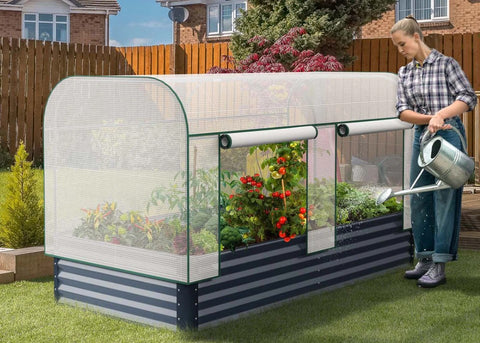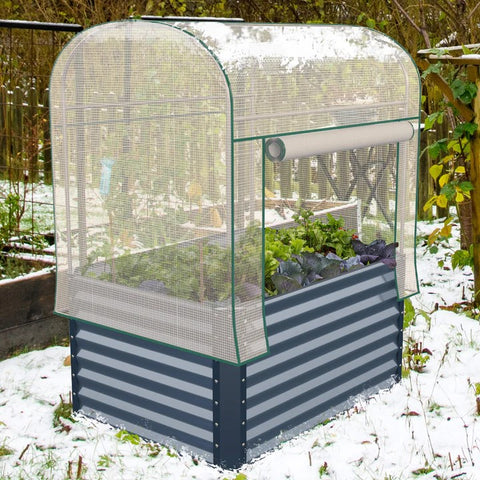As the brisk winds of winter begin to sweep through, gardeners face the challenge of safeguarding their beloved plants against the chill. For those with raised garden beds, the winterization process is not just about protection; it's an opportunity to lay the groundwork for a vibrant comeback in the spring. In this blog, we'll delve into the art of winterizing raised garden beds, ensuring your green haven is not only shielded from the cold but poised for a resilient resurgence when warmer days return.The following content also has some reference value for raised garden beds.
Preparing for the Winter Garden Odyssey
The Unique Charm of Raised Beds:
Raised garden beds offer a host of advantages, from better drainage to easier weed control. As winter approaches, these benefits come with the added advantage of improved insulation against the frosty bite. Embrace the uniqueness of your raised beds as you embark on the journey of winterization.
Essential Steps for Winterizing Raised Beds
- Protective Mulching:
Spread a cozy blanket of mulch over your raised beds to insulate the soil. This layer acts as a thermal shield, preventing the ground from freezing too deeply. Choose organic materials like straw or shredded leaves for both insulation and a natural aesthetic appeal.
- Covering Crops with Row Covers:
For gardeners who extend their growing season into winter, row covers are invaluable. These lightweight fabrics shield your plants from frost while still allowing sunlight to filter through. Consider creating mini-greenhouses with PVC hoops for added protection.

Strategic Plant Selection
- Cold-Loving Crops:
Optimize your raised beds for winter by choosing crops that thrive in colder temperatures. Vegetables like kale, spinach, and winter lettuce not only withstand the cold but often taste sweeter after exposure to frost.
- Overwintering Techniques:
Certain plants benefit from overwintering techniques. For example, garlic planted in the fall establishes robust roots during the winter, yielding a bountiful harvest come spring. Explore the world of overwintering to maximize the potential of your raised beds.
Creative Garden Covers
- DIY Burlap Wraps:
Elevate the protection of your raised beds with DIY burlap wraps. Wrap the bases of your taller plants to shield them from winter winds while adding a rustic charm to your garden. This creative touch not only protects but enhances the aesthetic appeal of your winterized beds.
- Garden Blankets for Added Warmth:
Invest in garden blankets or frost cloth to provide an additional layer of warmth during particularly cold nights. These specialized covers can be draped over plants and secured in place, offering an extra measure of protection against winter's icy grasp.

The Promise of Spring
Post-Winter Rejuvenation:
As winter bids farewell and the first signs of spring emerge, the effort invested in winterizing your raised garden beds becomes apparent. Remove protective coverings, inspect your soil, and prepare for the planting season ahead. The resilience of your garden beds will be a testament to the thoughtful care they received during the winter months.
Conclusion: A Winter Symphony for Your Raised Beds:
In the symphony of the seasons, winter plays a vital role in the lifecycle of your garden. By winterizing your raised beds, you're not just protecting them; you're conducting a harmonious preparation for the inevitable resurgence of life. As the cold months unfold, let your raised beds rest beneath their cozy covers, knowing that beneath the frost lies the promise of a vibrant and flourishing garden awaiting its cue to take center stage once again.









